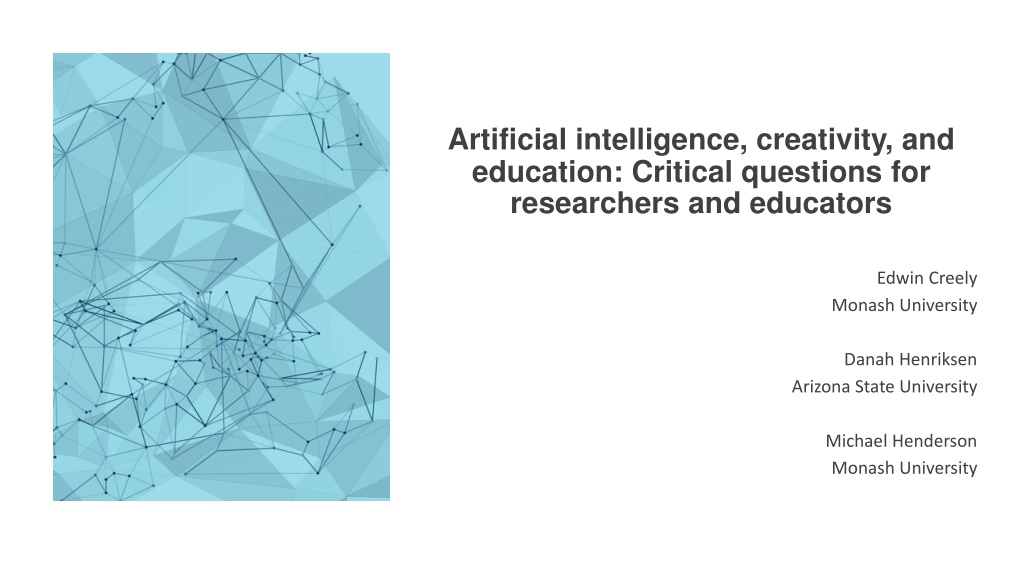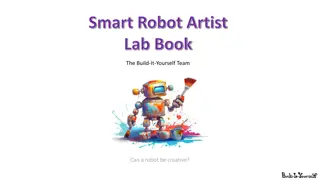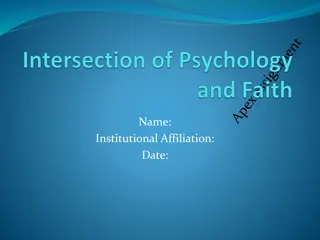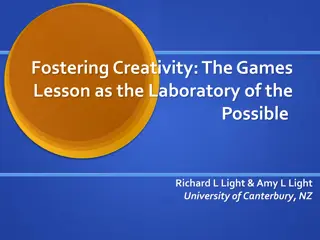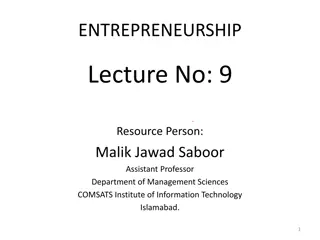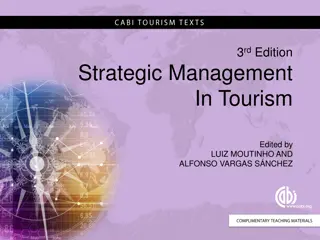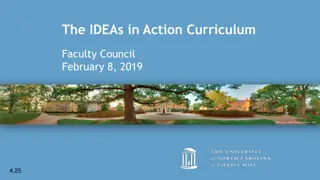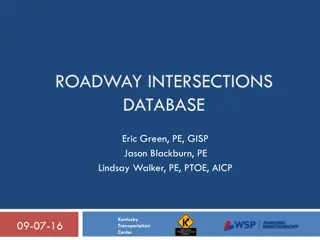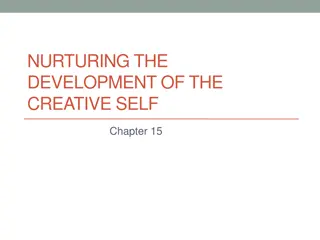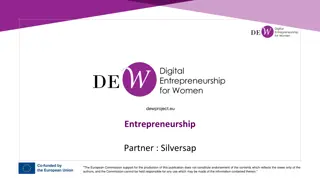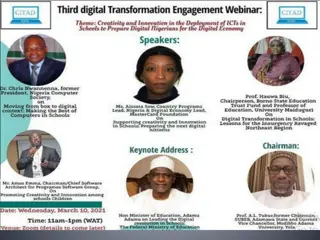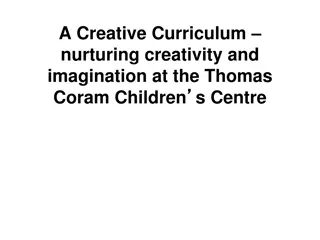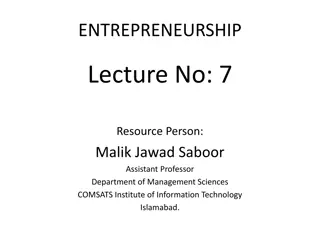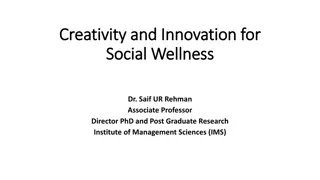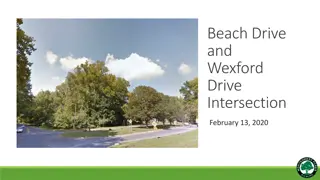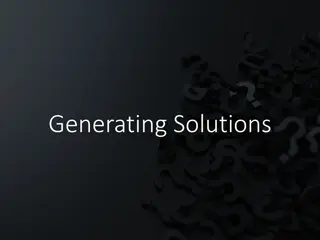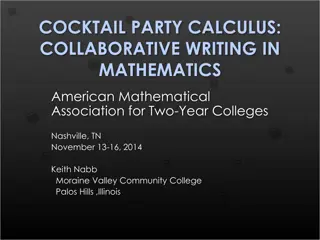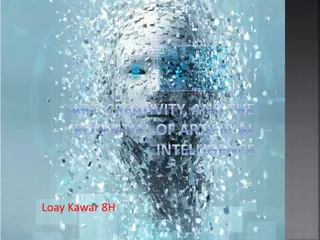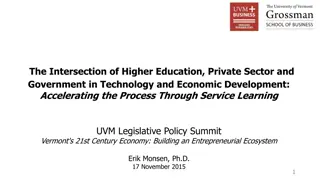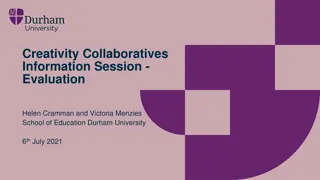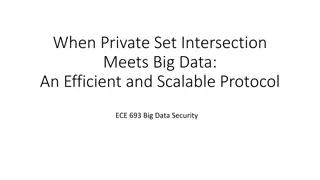Exploring the Intersection of AI, Creativity, and Education
The research delves into the evolving relationship between artificial intelligence (AI), creativity, and education. It examines how AI is reshaping creativity, the implications for education, and raises critical questions for researchers and educators to ponder. With a focus on collaborative inquiry, the study seeks to understand the synergies between AI and human creative agency within a sociomaterial framework.
Download Presentation

Please find below an Image/Link to download the presentation.
The content on the website is provided AS IS for your information and personal use only. It may not be sold, licensed, or shared on other websites without obtaining consent from the author. Download presentation by click this link. If you encounter any issues during the download, it is possible that the publisher has removed the file from their server.
E N D
Presentation Transcript
Artificial intelligence, creativity, and education: Critical questions for researchers and educators Edwin Creely Monash University Danah Henriksen Arizona State University Michael Henderson Monash University
Prompt When love is lost, it seems so bleak A lonely heart, a voice too weak But hold on tight, and don't you weep For love can come when you least seek. A poem about finding new love in your life Text 3 When love's cord is severed And the heart in lovely And the voice is weak, and life seems as bleak as a blizzard, you should hold on tight, And not let the cold remove the Warmth of your heart, For love can come when you least seek. Text 2 Which is Chat GPT? I want to see that intimate look in an eye again, With a gentle spark, A touch, A smile, and Laughter that takes away the clouds, And closeness that dispels doubts.
AI, creativity & AI, creativity & education education The growth of AI has problematized the prevailing individually human-centered view of creativity (Salles et al., 2020) AI is increasingly playing a role in creative outcomes, often working in conjunction with humans for a kind of hybrid creativity (Peeters et al., 2021) Educational researchers, teacher educators and practitioners have not yet extensively explored these new functions in relation to creativity, and AI.
Research focus Research focus How should we understand creativity in light of the evolution of AI? What are the possible implications for education and enactments in practice? Rather than attempting to provide answers we want to identify key areas of concern and important questions to ask.
Our methodological Our methodological approach approach Collaborative dialogic inquiry between the authors, built around a set of discussion prompts (Melander, 2022) Example prompt: What are possible synergies between AI and human creative agency?
Theoretical understandings Theoretical understandings Sociomaterial theory concerns the intricacies of the relationship between the social and material worlds (Orlikowski, 2010) All technologies impinge on the material The posthuman possibilities for technologies and creativity (including AI)
Findings: Findings: A critical A critical framework framework
Final thoughts Final thoughts The critical framework is offered in the spirit of evoking thinking about research and practice in terms of the affordances, limitations, and issues to do with creativity, AI, and educational futures. It is not designed to proffer solutions or strategies but to identify a set of pressing concerns, stimulate debate, and intimate new directions in research and practice. Two key ideas in juxtaposition 1. AI has the potential to extend ways of creatively making and producing 2. Learners are expected to be able to demonstrate their individual capability in relation to standards and criteria So, we have an inherent dilemma
Barad, K. (2003). Posthumanist performativity: Toward an understanding of how matter comes to matter. Signs, 28(3), 801-831. https://doi.org/10.1086/345321 Select Select reference reference list list Boden, M. A. (1998). Creativity and artificial intelligence. Artificial intelligence, 103(1-2), 347-356. https://doi.org/10.1016/S0004-3702(98)00055-1 Broussard, M. (2018). Artificial unintelligence: How computers misunderstand the world. MIT Press. Creely, E., Henriksen, D., & Henderson, M. (2021). Three Modes of Creativity. Journal of Creative Behavior. 55(2), 306-318. https://doi.org/10.1002/jocb.452 de Saint Laurent, C. (2018). In defence of machine learning: Debunking the myths of artificial intelligence. Europe's journal of psychology, 14(4), 734. https://doi.org/10.5964/ejop.v14i4.1823 Humble, N., & Mozelius, P. (2019). Artificial intelligence in education - a promise, a threat or a hype? European Conference on the Impact of Artificial Intelligence and Robotics, EM-Normandie Business School Oxford, UK, 31 October-1 November 2019, ECIAIR.19.005 (pp.149-156). https://doi.org/10.34190 Jennings, K. (2010). Developing Creativity: Artificial Barriers in Artificial Intelligence. Minds & Machines,20, 489 501. https://doi.org/10.1007/s11023-010-9206-y Mazzone, M., & Elgammal, A. (2019). Art, creativity, and the potential of artificial intelligence. Arts, 8(1). https://doi.org/10.3390/arts8010026 McCarthy, J. (2004). What is artificial intelligence? http://cse.unl.edu/~choueiry/S09-476-876/Documents/whatisai.pdf Melander, A., Mullern, T., Anderssson, D., Elgin, F., & L fving, M. (2022). Bridging the knowledge gap in collaborative research in dialogues we trust. Systemic Practice and Action Research, 35, 655 677. https://doi.org/10.1007/s11213-021- 09589-2 Milne, C., & Scantlebury, K. (2019). Material practice and materiality: Too long ignored in science education. Springer. Mishra, P., Yadav, A., & Deep-Play Research Group. (2013). Of art and algorithms. TechTrends, 57(3), 10-14. https://doi.org/10.1007/s11528-013-0655-z Peeters, M., van Diggelen, J., van den Bosch, K., Bronkhorst, A., Neerincx, M., Schraagen, J. & Raaijmakers, S. (2021). Hybrid collective intelligence in a human AI society. AI & Society, 36, 217 238. https://doi.org/10.1007/s00146-020-01005-y Popenici, S. & Kerr, S. (2017). Exploring the impact of artificial intelligence on teaching and learning in higher education. Research and Practice in Technology Enhanced Learning, 12(1). https://doi.org/10.1186/s41039-017-0062-8 Orlikowski, W. (2010). The sociomateriality of organisational life: considering technology in management research. Cambridge Journal of Economics, 34(1), 125 141. https://doi.org/10.1093/cje/bep058 Runco, M. A., & Jaeger, G. J. (2012). The standard definition of creativity. Creativity Research Journal,24(1), 92-96. https://doi.org/10.1080/10400419.2012.650092 Rust R., & Huang M. (2021). Artificial creativity. The feeling economy. Palgrave Macmillan. https://doi.org/10.1007/978-3-030- 52977-2_13 Salles, A., Evers, K., & Farisco, M. (2020). Anthropomorphism in AI. AJOB neuroscience, 11(2), 88-95. https://doi.org/10.1080/21507740.2020.1740350 Schober, R. (2022). Passing the Turing test? AI generated poetry and posthuman creativity. Artificial intelligence and human enhancement, 21, 151. https://doi.org/10.1515/9783110770216-009
Questions Questions
